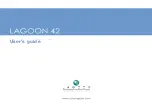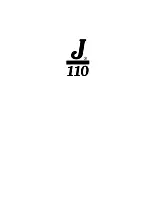
35
DANGER
FUEL SYSTEM
3.1 General
The gasoline fuel system used in Scout boats is
designed to meet or exceed the requirements of
the U.S. Coast Guard, the Boating Industry Asso-
ciation, and The American Boat and Yacht Council
in effect at the time of manufacture.
All gasoline fuel systems have been factory in-
spected and pressure tested in accordance with
regulations in effect at the time of manufacture.
This inspection assures that the system is air tight,
leak proof and safe. It is the responsibility of the
purchaser to maintain it in that condition. Make
frequent inspections to assure that no deteriora-
tion or loosening of connections is resulting from
vibration.
DO NOT LET THE ODOR OF GASOLINE GO UNCHECKED. ANY
ODOR OF GASOLINE MUST BE IMMEDIATELY INVESTIGATED
AND STEPS TAKEN TO PROTECT THE BOAT AND ITS
OCCUPANTS UNTIL THE PROBLEM IS CORRECTED. IF THE
ODOR OF GASOLINE IS NOTED, SHUT OFF ALL ENGINES
AND ELECTRICAL EQUIPMENT. INVESTIGATE AND CORRECT
THE SITUATION IMMEDIATELY. HAVE ALL PASSENGERS
PUT ON PERSONAL FLOTATION DEVICES AND KEEP A FIRE
EXTINGUISHER READY UNTIL THE SITUATION IS RESOLVED.
Fuel Withdrawal Tube
The fuel withdrawal tube is positioned in the fuel
tank to achieve optimum fuel usage, fuel line rout-
ing, etc. At certain speeds and hull trim angles,
the fuel supply at the withdrawal tank location can
increase or decrease accordingly. Be extremely
careful when attempting to operate the boat when
low on fuel. Though some fuel may be in the tank,
the relative trim angle of the boat may cause the
fuel to flow away from the withdrawal.
Fuel Gauge
This indicates the amount of fuel in the tank. Due
to the mechanical nature of the fuel sender, varia-
tions in readings during various speeds of opera-
tion may occur. This system is merely a relative
indication of the available fuel supply and not a
calibrated instrument.
Fuel Fills
A “keyless” fuel fill is located on the gunnel that is
marked “GAS.” The fuel fill is opened by turning
the cap counter clockwise until it can be removed.
After fueling, install the fuel cap and tighten.
Be sure to use the proper type and grade fuel.
Refer to the engine owner’s manual for additional
information.
Note: Do not overtighten the fuel cap. If the
cap is overtightened, the O-ring seal could
be damaged allowing water to contaminate
the fuel system.
Fuel Fill
Chapter 3:
Winyah Fuel Withdrawal Tube and Anti-Siphon Valve
Below Access Hatch, Just Aft of Center Console
Summary of Contents for 221 Winyah
Page 1: ...Owner s Manual Scout Boats Inc 2531 Hwy 78 West Summerville SC 29483 251 XS 221 Winyah ...
Page 2: ...2 THIS PAGE WAS LEFT BLANK INTENTIONALLY Print Date 11 13 2012 ...
Page 8: ...8 THIS PAGE WAS LEFT BLANK INTENTIONALLY ...
Page 10: ...10 THIS PAGE WAS LEFT BLANK INTENTIONALLY ...
Page 14: ...14 THIS PAGE WAS LEFT BLANK INTENTIONALLY ...
Page 26: ...26 THIS PAGE WAS LEFT BLANK INTENTIONALLY ...
Page 50: ...50 THIS PAGE WAS LEFT BLANK INTENTIONALLY ...
Page 58: ...58 THIS PAGE WAS LEFT BLANK INTENTIONALLY ...
Page 85: ...85 ...
Page 106: ...106 THIS PAGE WAS LEFT BLANK INTENTIONALLY ...
Page 112: ...112 THIS PAGE WAS LEFT BLANK INTENTIONALLY ...
Page 126: ...126 THIS PAGE WAS LEFT BLANK INTENTIONALLY ...
Page 132: ...132 THIS PAGE WAS LEFT BLANK INTENTIONALLY ...
Page 134: ...134 MAINTENANCE LOG Hours Date Dealer Service Repairs ...
Page 135: ...135 MAINTENANCE LOG Hours Date Dealer Service Repairs ...
Page 136: ...136 MAINTENANCE LOG Hours Date Dealer Service Repairs ...
Page 137: ...137 MAINTENANCE LOG Hours Date Dealer Service Repairs ...
Page 138: ...138 MAINTENANCE LOG Hours Date Dealer Service Repairs ...
Page 139: ...139 Appendix E BOATING ACCIDENT REPORT ...
Page 140: ...140 ...
Page 141: ...141 ...
Page 142: ...142 THIS PAGE WAS LEFT BLANK INTENTIONALLY ...
Page 144: ...144 THIS PAGE WAS LEFT BLANK INTENTIONALLY ...
Page 149: ......
Page 150: ......
















































